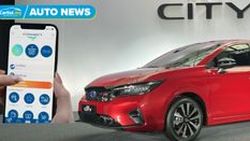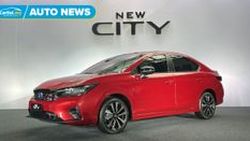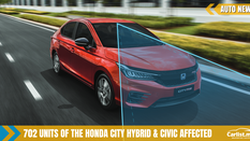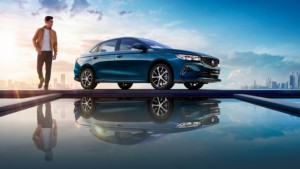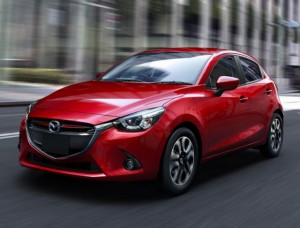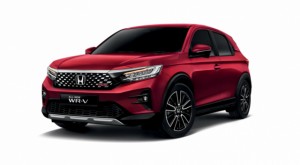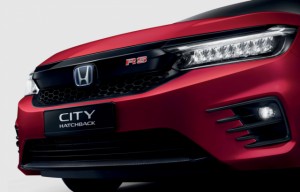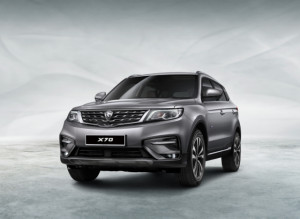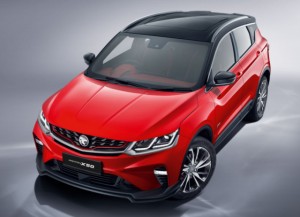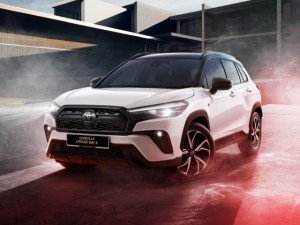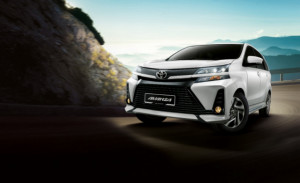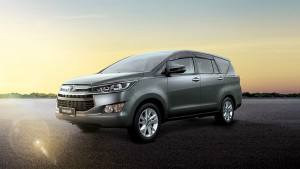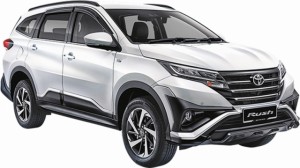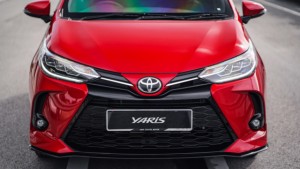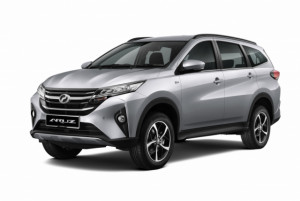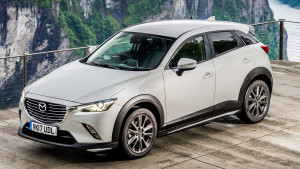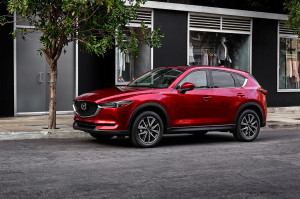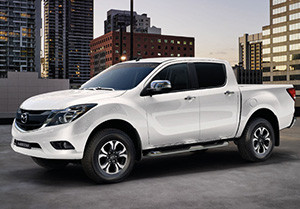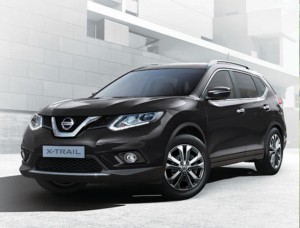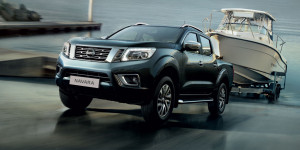Key Highlights
Overview
Honda City 2023 Review
One of the most popular non-national cars, the Honda City has become a staple for those moving up in their careers and increasing their earning and spending potential – as well as being popular first or second family cars. The sister car to the Honda Jazz hatchback, the Honda City has a history that’s slightly more complex and nuanced. While the namesake has its roots in a compact hatchback produced in the 1980s, the City as we know it really came into existence in the late 90s – in its third generation.
It was a time when the Honda Civic had grown too large and complex to be an entry-level model, and the City was effectively the new economical starter Honda for those looking to elevate their ownership experience. The seventh and current generation was launched locally towards the end of 2020, available in four trim levels and with two powertrain options.
While the size of this most current generation City hasn’t grown significantly compared to its predecessor, the Honda City has been upgraded and improved radically in terms of features and functionality to really keep in line with rivals. If you’re looking at a compact sedan, you are almost guaranteed to take a look at the Honda City.
Honda City Specifications
Understanding the different powertrains on offer for the Honda City can be a bit tricky – but we’ll try to put it as simply as possible. For the
- S, E, and V variants - 1.5-litre DOHC petrol engine that makes 121 PS and 145 Nm of torque, paired with Honda’s CVT-type automatic transmission.
- The RS is where you need a little more understanding of the i-MMD hybrid system that is somewhat unconventional for a hybrid - 109 PS and 253 Nm of torque
While we’re used to identifying hybrids as petrol engines and electric motors combining their outputs, Honda does it a little differently with this generation of cars. The electric motor does most of the heavy lifting, with an output of 109 PS and 253 Nm of torque (from an absolute standstill). The petrol engine of the Honda City serves to both recharge the hybrid battery and to maintain higher cruising speeds as it is more efficient than the electric motor.
Yes – the range-topping City model makes less overall power, but it has much more low-end and mid-range torque, allowing for quicker acceleration off the line and ease of overtaking. As we’ve also found with hybrid models, there is an extra layer of refinement when your car is largely silent through most of its operation – and unlike a pure electric car, you never have to worry about running out of charge.
As for the dimensions of the car, the Honda City weighs in at 4,553 mm long, 1,748 mm wide, and 1,467 mm tall with a wheelbase of 2,600 mm. The boot capacity for the non-hybrid models is a solid 519 litres, while the RS hybrid model makes do with 410 litres. As is the usual formula for mass-market models, the City packs a MacPherson strut front and torsion beam rear suspension setup – not the most complex, but definitely the most cost-effective and easiest to maintain.
Exterior Honda City 2023
There’s no doubt that the styling of this generation of Honda City follows that of the current generation Honda Accord, and the upcoming Honda Civic will follow suit too. What this means is it comes with a prominent front grille and incredibly stylish headlights that manage to both standout and blend smoothly into the bodywork. The taillights are much the same, and as a bit of a cheeky styling cue they once again bear a resemblance to a certain European sports sedan – as they have for the last few generations of the Honda City.
LED headlights are available for the City V and RS variants, while the S and E variants come with halogen projectors. The S and RS variants get body-coloured door handles, while the E and V variants of the Honda City get chrome handles instead. All variants get LED taillights and turn signals on the mirrors. Seen here is the hero colour for the Honda City – Passion Red Pearl – but you can also get it in Platinum White Pearl, Lunar Silver Metallic (sure to be popular), Modern Steel Metallic, and Crystal Black Pearl – the last of which is not available for the RS hybrid variant.
Interior Honda City 2023
Space, space, space. That’s what you’ll be thinking when you hop into the Honda City, and like all Honda models you get an amazing amount of room for the overall external footprint. The design of the dashboard and switchgear balances functionality and class without compromise in either department.
Cabin space, cubby holes, and storage all make the ownership experience of the Honda City a breeze. You can easily hide away your belongings to keep the interior clutter-free, and easily access them in a pinch. It’s a well-thought-out product for your average ASEAN, and Malaysian owner.
Honda City Safety Features
In this day and age, nearly every car on the market has to come with both passive and active safety systems. The Honda City is no different, with all variants getting Vehicle Stability Assist, Anti-lock Braking Systems, Electronic Brake Distribution, Brake Assist, and Hill Start Assist. All variants of the City also get at least front and side airbags, as well as ISOFIX.
If you want the full fat package, you need to go for the Honda City RS variant. With it comes the full Honda SENSING package, including Forward Collision Warning, Collision Mitigation Braking System, Lane Departure Warning, Lane Keep Assist System, Adaptive Cruise Control and more.
Pros & Cons: Honda City
Resale value is always going to be a hot topic with mass-market models, and the Honda City delivers like any other Honda model. The powertrain options available for the Honda City are both class-leading and game-changing (depending on which you choose), and having the most modern technology powering your car has its perks. It may be a bit of a cliché as well, but Honda’s packaging is as impressive as ever in the City with fantastic interior and storage space for a car in its class.
As for the drawbacks, the Honda models are known to be a little pricier when it comes to maintenance and upkeep, and have more frequent service intervals. Depending on your luck, your experience may be absolutely flawless in terms of refinement, or you may find that the CVT-type automatic transmission in the Honda City may eventually develops the odd mild jerk or slip. None of these are dealbreakers, but just things to keep in mind when looking at the City.
Honda City Price in Malaysia
Positioned as the entry-level model, the Honda City naturally has entry-level prices. The S variant goes for RM 76,800, while the E offers a little more content for a little more money at RM 84,800. The most expensive pure petrol powertrain variant, the Honda City V, goes for RM 89,800, while the range-topping RS e:HEV as it’s officially known will set you back RM 105,950 – all prices without the current SST exemptions.
We are living in a time when top-spec entry-level mass-market models breach the RM 100,000 mark, which is usually an indication that we’re almost due for a smaller vehicle to slot below the Honda City. In other markets, the Brio represents that segment – but that may be too pricey of a proposition here.
Features of Honda City 2023
With the exception of the entry-level S variant, the Honda City gets a fairly reasonable amount of equipment. An 8-inch display audio system with Apple CarPlay and Android Auto connectivity is present, as are two USB ports and Bluetooth connectivity. The S and E variants get 4 speakers, while the V and RS get 8 speakers instead.
Similarly, the top three variants of the Honda City get remote engine start and cruise control – though all variants come with keyless entry and push-start buttons. Paddle shift functionality is available for the E and V models. Analogue and digital combination meters are present in the S, E, and V variants, while the RS gets a full 7-inch TFT meter. Surfaces for the V and RS models of the City are leather or combination leather, while urethane and fabric are present for the S and E variants.
Honda City 2023 Fuel Consumption
If you’re looking for a fuel sipper, the Honda City is more than capable – especially with its CVT-type automatic transmission keeping you at the lowest possible engine speeds for a given vehicle speed. The result is 18.5 kilometres per litre for the S, E, and V variants – which come with the regular 1.5-litre engine – and a whopping 27.8 kilometres per litre for the Honda City RS variant. Naturally actual results will vary heavily depending on your driving style and conditions.
Read more about the comparison between Honda City vs Proton X50 vs Perodua Ativa vs Toyota Vios here.
Exclusive deals for you
Get March Offers from authorized dealers near you!
Key Details
- Body Type: Sedan
- Transmission: Automatic
- Engine Capacity: 1496 cc - 1497 cc
- Fuel Type: petrol/hybrid
- Seat Capacity: 5
- Price: RM 84,900 - RM 111,900
Variations
From RM 84,900
From RM 89,900
From RM 94,900
From RM 111,900
From RM 99,900
Key Details
- Body Type: Sedan
- Transmission: Automatic
- Engine Capacity: 1496 cc - 1497 cc
- Fuel Type: petrol/hybrid
- Seat Capacity: 5
- Price: RM 84,900 - RM 111,900
Gallery
Reviews
-

Jim Kem
14 Oct 2020
First Drive: Honda City RS i-MMD - Blurring B-Segment Battle Lines
This step forward is very apparent when driving the new electrified City as it works quite differently to other hybrid powertrains. I knew it would offer up a different sensation, of course, but it still came as a surprise when the started car moving via the electric motor alone while the engine, essentially, is having no direct impact on the spinning wheels. See, the i-MMD system utilises two electric motors: the Traction Motor, and a smaller electric generator. Sandwiched between these core components are the battery array of 48 lithium-ion cells and the 1.5-litre Atkinson-cycle i-VTEC naturally aspirated four-cylinder engine. What’s important to keep in mind here is how they work in synergy.
View full review -

Jim Kem
14 Apr 2021
REVIEW: 2021 Honda City 1.5V - Better At Everything, Master At Nothing
Space is ample thanks to the same 2,600mm wheelbase as before, especially with rear legroom and headroom, but there is a much larger sense of sophistication present here that the older model lacked. From the driver’s perspective, the control placement seems much more natural - that feeling of sitting behind the wall-like dashboard or too high over the car is pretty much gone. It’s 520-litre boot sounds huge on the spec sheet, but when compared to other rivals in the segment in a head-to-head test, it proved only middling when asked to swallow up a mock collection of cargo. This is despite the new City boasting a 110mm increase in overall length and a 54mm increase in width. That being said, there’s still a surprising amount of punch and eagerness on offer here. This little motor gains a dual-overhead camshaft design and a few other internal alterations, but is otherwise very similar to the unit that powered the older car. Its 121PS and 145Nm peak power and torque output are about par for the course in this class, but its delivery is almost creamy smooth when paired with that CVT, and especially if you drive at an unhurried pace, letting the car settle into its own patterns. Don’t worry, you’ll keep up with highway traffic just fine. As standard, the new City 1.5V comes with 6 airbags as well as anti-lock brakes (ABS), Vehicle Stability Assist, Brake Assist, and Hill Start Assist, along with rear ISOFIX mounting points and decently clear reversing camera with multi-angle view and dual reversing sensors. Undoubtedly, the car has evolved to be the most deserving of retaining the B-segment crown, but there isn’t a particular category here that we found the City to excel at. It isn’t the fastest, or best looking, or best handling, or most spacious for rear passengers, neither does it have the biggest boot, or longest list of equipment and tech.
View full review
User Review of Honda City
Good performance but poor QC
complete full spec car
Overall needs to be strengthened
Quite a good car
Good product view
Latest News
Similar cars
Latest Videos

Thank you!





































